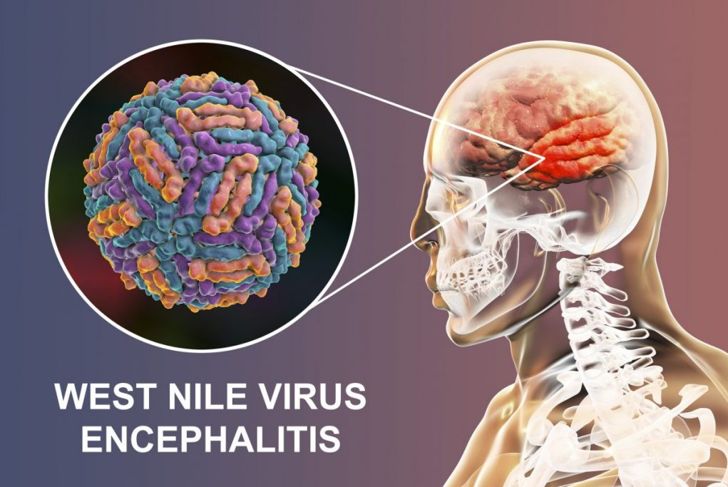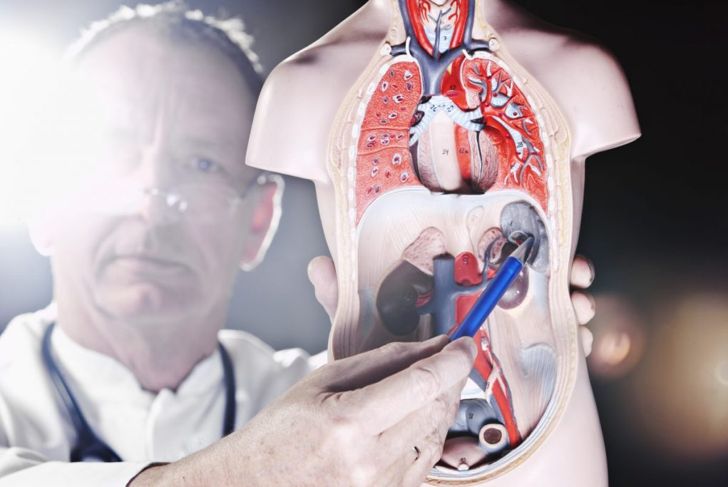West Nile virus is a disease transmitted to humans by the bite of an infected mosquito. The mosquito initially acquires the virus from biting birds that carry it. Relevant studies suggest as many as 80% of people with West Nile do not develop symptoms and never realize that they had an infection. Symptoms that do appear generally go away on their own, but more severe issues can develop and require immediate medical attention.
Flu-Like Symptoms
When people exhibit symptoms of West Nile, they may first think they have the flu. Some individuals develop a fever without a clear cause; this affects around 20% of people with the virus. Nausea frequently occurs alongside the fever. The fever is usually low-grade, although it can be higher in severe cases. Symptoms of fatigue, generalized aches, and loss of appetite may also be present.
Joint Pain
Some people who develop symptoms with West Nile virus complain of joint pain. The joints of the infected person may become unusually stiff and painful, and feel warm. This pain may manifest alongside the flu-like effects, though it may also develop as the singular symptom. Some people confuse the joint pain for arthritis, while physicians may confuse the symptoms for another mosquito-borne illness: chikungunya. Joint pain and swelling are more common with chikungunya than with the West Nile virus.
Headaches and Body Aches
In addition to flu-like symptoms and joint pain, people with West Nile may describe other aches, including severe headaches that began at the base of the skull. Some experience neck, upper back, or arm pain. Fatigue is also common. Some people report spending most of the day in bed without the energy to get up.
Swollen Lymph Nodes
Within the body are many lymph nodes that play an integral part in fighting off infections. They function as special filters capable of trapping viruses and bacteria before they cause illness. The lymph nodes swell because they’re working hard to contain a bacteria, virus, or other harmful invaders. In this case, the invader is a virus. West Nile virus primarily affects the lymph nodes in the upper body, which may develop a constant ache, especially if they swell excessively.
Rashes
Some people who experience symptoms with West Nile infections develop a red rash. It primarily affects the trunk of the body, specifically the upper back, neck, and chest. In some individuals, the rash spreads to the upper arms, legs, palms of the hands, soles of the feet, or face. If the rash is particularly severe, it may stretch across the entirety of the torso and extremities. It is usually marked by small, red, raised or flat dots with pink or red discoloration.
Encephalitis and Meningitis
If a West Nile infection is severe, a person may exhibit symptoms similar to those of neurological diseases such as encephalitis or inflammation of the brain, and meningitis, which is inflammation of the membranes around the brain and spinal cord. Some people with West Nile encephalitis or meningitis also develop other symptoms, beginning with tremors and confusion that can lead to coma and death. Fortunately, this is rare. Only one percent of people with the West Nile virus develop involvement of the nervous system.
Stupor
In severe case of West Nile, where the disease affects the nervous system, people can develop stupor. An individual with stupor may appear conscious but is entirely unresponsive. Some people have open eyes that follow moving objects, but pain may be the only stimuli that can provoke a reaction. Bright lights, loud noises, and other causes of shock may also cause a response.
Muscle Weakness and Paralysis
Another neurological symptom of severe cases of West Nile is muscle weakness that eventually leads to flaccid paralysis. This is the result of the infection attacking the nerves that control the muscles. As the infection spreads, the muscles gradually become weaker, eventually becoming limp and losing their ability to contract. If paralysis reaches the respiratory muscles, the symptom can be fatal.
Splenomegaly
A possible symptom of a West Nile infection is splenomegaly or an enlarged spleen. Just as lymph nodes swell to fight infections, the spleen can also enlarge. Research shows the West Nile virus travels to the spleen and lymph nodes, where it replicates to produce more viruses. In many cases, splenomegaly has no symptoms, and a doctor will only notice it during diagnostic tests. Symptoms that do develop may include pain or a feeling of fullness as the spleen presses on the stomach. Anemia, easy bleeding, and fatigue are also possible. Additionally, because the spleen is one of the immune system’s first lines of defense, the absence of a spleen, in people who have had it removed, helps the virus gain a stronger foothold in the body.
Disease Developments
Rarely, West Nile virus can lead to other conditions and diseases, including:
- Pancreatitis is inflammation of the pancreas that can cause abdominal pain, fever, rapid pulse, and nausea.
- Myocarditis is inflammation of the heart muscle, and adversely affects the organ’s ability to pump blood. It can lead to arrhythmia, strokes, and heart attacks.
- Optic neuritis is inflammation that damages the optic nerve. This can cause eye pain, loss of color vision, and complete vision loss.
- Hepatitis is inflammation of the liver, which can lead to diarrhea, nausea, jaundice, and loss of appetite. Severe complications include cirrhosis and liver cancer.

 Home
Home Health
Health Diet & Nutrition
Diet & Nutrition Living Well
Living Well More
More




















